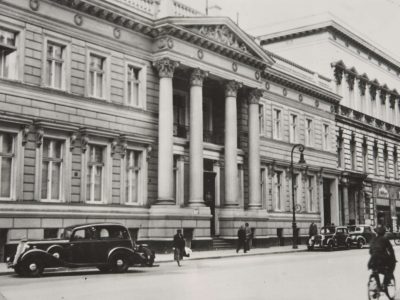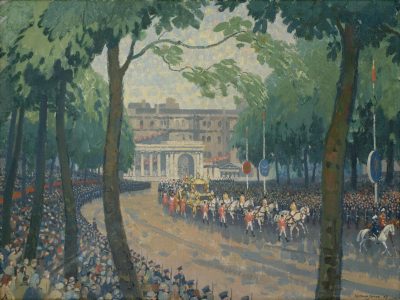Eye of the Sultan: a new display for Ankara
The British Ambassador's Residence in Ankara was built in the late 1930s. The outbreak of the Second World War meant it was first used as offices for the embassy’s increased numbers of staff. But from the autumn of 1945, after it was reconfigured and redecorated, the ambassador moved in. The house has remained an outstanding residence ever since, hosting royalty, presidents, ministers and other senior people from all walks of life.
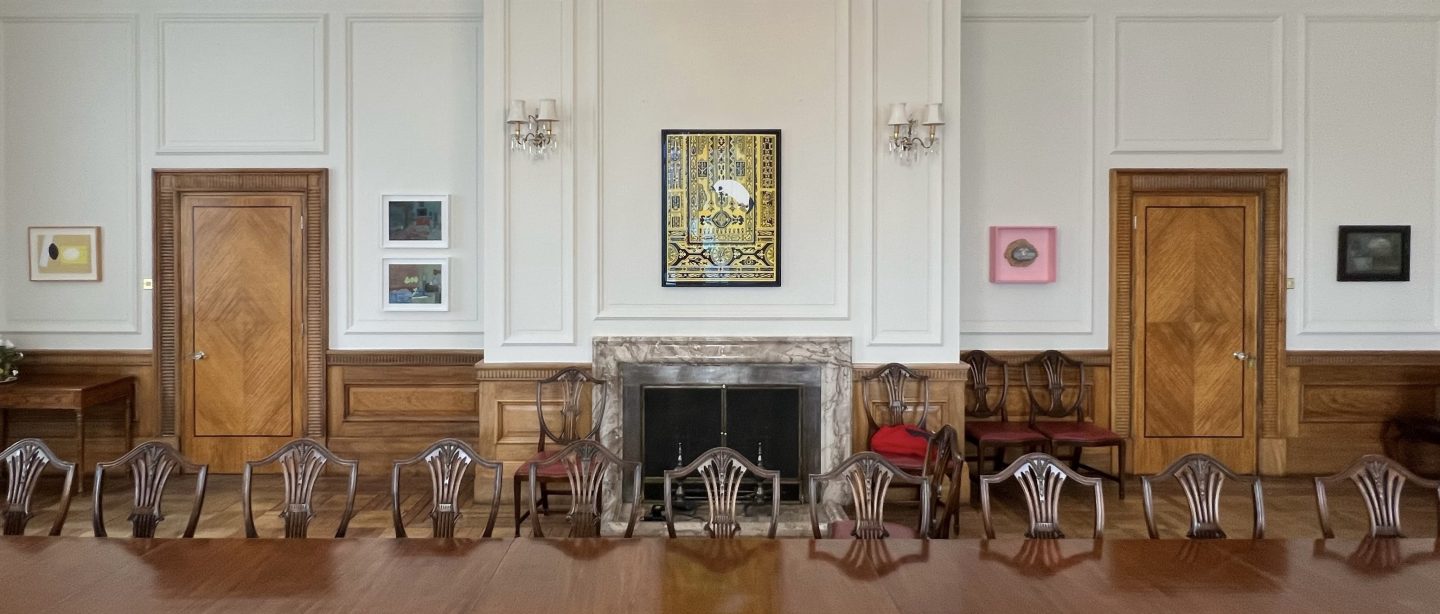
A view of the display in the British Ambassador's Residence in Ankara, Turkey.
A key part of the Residence’s appeal and convening power is its art work. I am very grateful to [the Government Art Collection] for curating a new series of pictures for the residence, installed in March 2022. The building’s elegant public rooms and guest bedrooms now display works on particular themes, all of which have a connection to Britain’s relations with Turkey.
British Ambassador to Turkey Sir Dominick Chilcott KCMG
Diplomacy through art
The new display in the British Ambassador’s Residence in Ankara reflects the long diplomatic relations between the UK and Turkey, which date back to the 16th century. The new installation coincides with an important centenary, the establishment of the Republic of Turkey in 2023. When the Lausanne Treaty of 1923 was signed recognising the boundaries of the modern state of Turkey, King George V was on the throne, and he along with his Queen-Consort Mary of Teck are displayed at the Residence as a reminder of this salient moment in the country’s history.
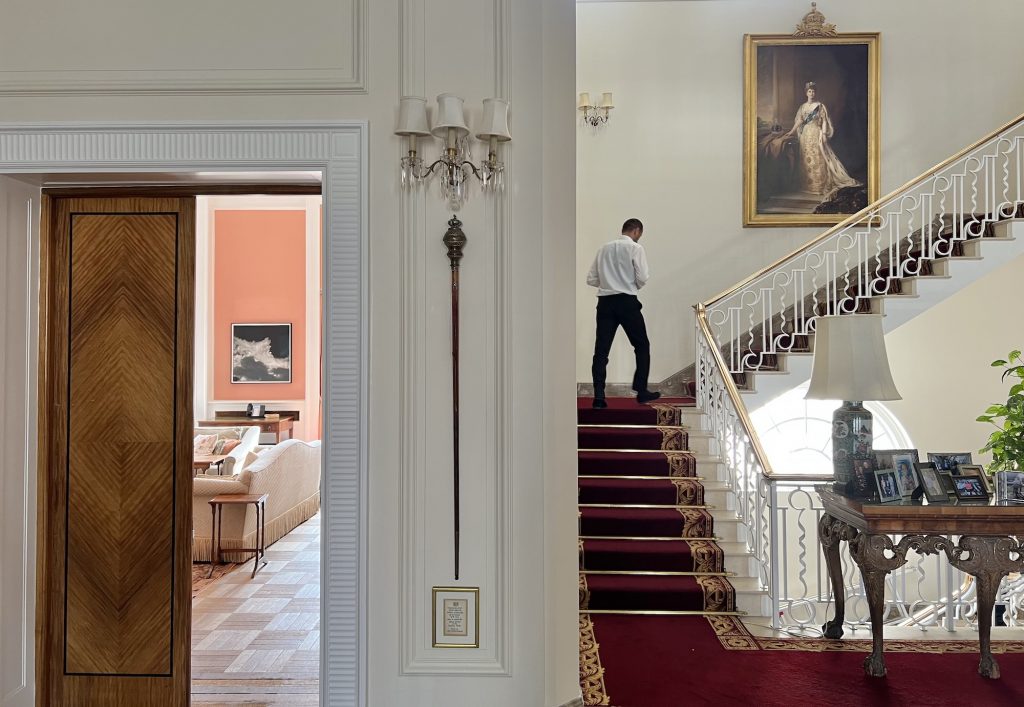
The British Ambassador’s Residence in Ankara, Turkey. From left to right: Tacita Dean’s Foreign Policy, Grand Vizier’s rod and Mary of Teck (1867-1953), Queen Consort of King George.
One of the curatorial themes explored in the display looks at important British diplomatic figures. Such an example is Edward Wortley Montagu (1678-1761) who was appointed the British Ambassador to the Ottoman Empire in 1716 to negotiate a peace treaty between the Habsburg monarchy in Austria and the Ottomans.
Four paintings by Antonio Guardi and his studio illustrate the way European ambassadors at the time experienced a diplomatic encounter with the Ottoman court, allowing us to imagine the way in which Montagu would have been received by the Sultan at Topkapi Palace in Istanbul. As part of the ceremony, he attended a meeting in the divan or council chamber of the palace, after which he and his retinue were offered a meal by the Grand Vizier. Unnoticed, the Sultan could watch everything behind a small grilled window known as ‘the Eye of the Sultan’, which can still be seen in the Topkapi Palace today.
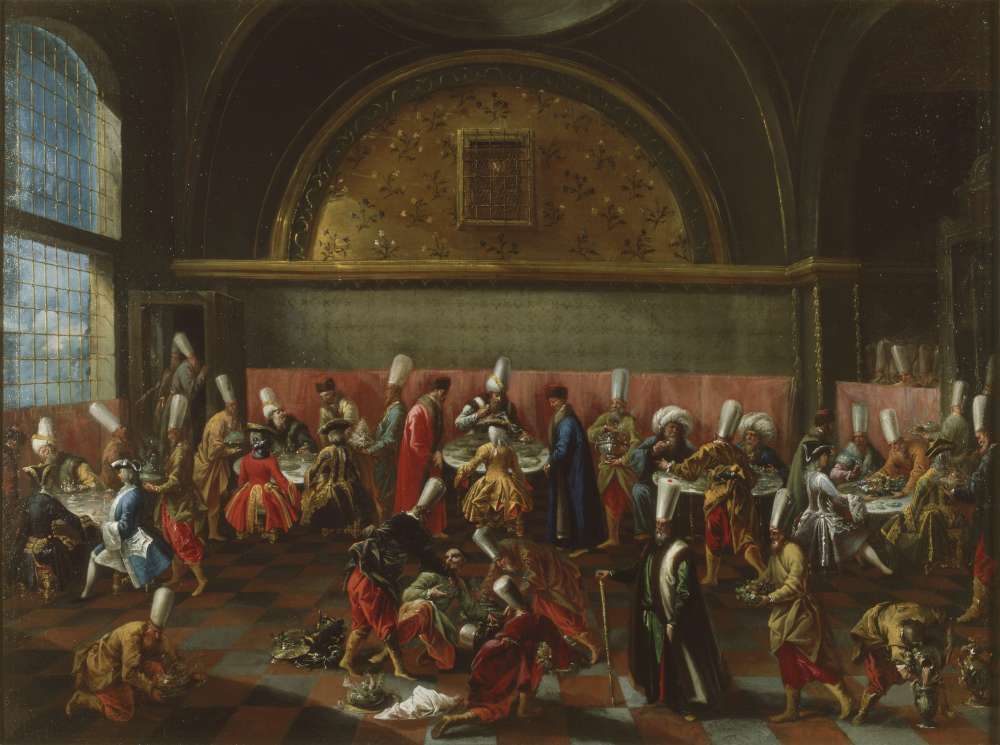
Antonio Guardi & Studio, Audience of a European Ambassador with the Sultan, c. 1740
Silk Routes
Diplomatic ties between the two countries enabled trade to develop further along the Silk Route. Turkey’s geographical position meant that it could serve as a bridge between Asia and Europe. Caravan routes transported goods from one continent to the other. This selection of historical as well as contemporary works of art hints at these cultural exchanges and showcases Central Asian rugs, marbled paper, spices and precious stones.
In 1851, Queen Victoria visited the Great Exhibition at Crystal Palace and observed the Turkish pavilion:
Under a sort of tent, containing charming Turkish stuffs, including very fine silks, the manufacture of which was recently introduced by the Sultan into Turkey, raw materials, carpets and rugs.
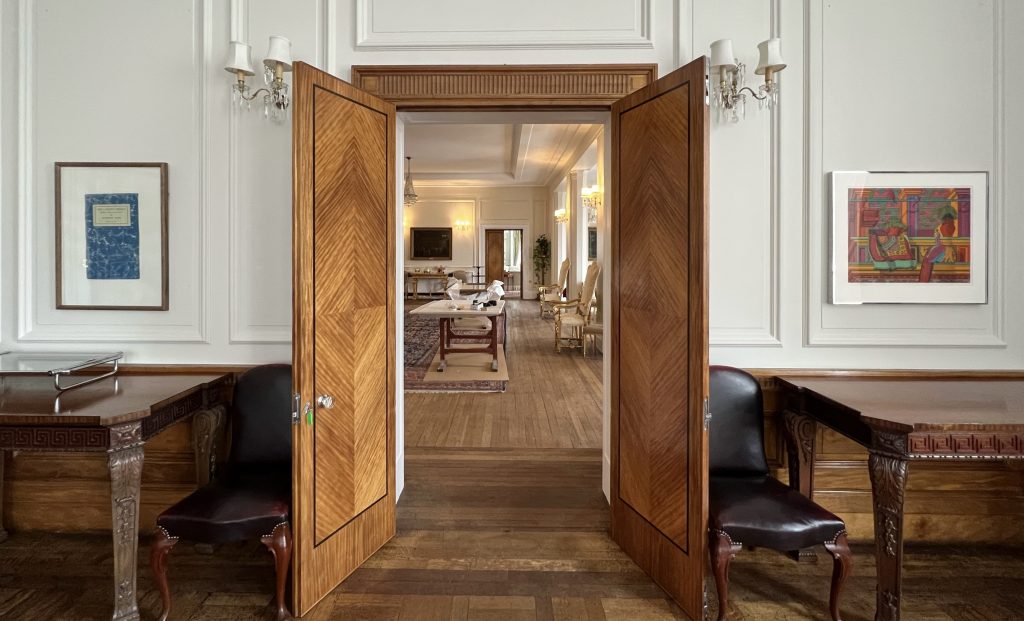
Inside the British Ambassador’s Residence in Ankara, Turkey.
Turkish Tulips
Originating in Central Asia, tulips were introduced to Europe via Istanbul in the 16th century. The flower’s beauty and variety inspired court poets, artists and merchants, but its excessively high price caused a so-called tulip mania in the Dutch Republic. During the reign of Ahmed III in the 18th century (known as ‘the Tulip Era’), the flower was re-imported from the Dutch Republic to the Ottoman Empire and European ambassadors would have witnessed festivals and illuminations dedicated to tulips.

Works from the Turkish Tulips portfolio. Clockwise from left: Prints by Sarah Staton, Michael Craig-Martin, Adam Dant, Cornelia Parker, Tom Gallant and Gavin Turk.
In 2017 Museum Van Loon in Amsterdam invited Gavin Turk to curate the exhibition Turkish Tulips. Turk presented a trans-historical dialogue between contemporary art and the history of the Van Loon family who traded with the Ottoman Empire in the 16th century. Both an artist and a curator, Turk examined the trading route of the tulip from Turkey to the Netherlands through a series of contemporary prints commissioned from British artists which are now on display in the Residence.
Conflict and cooperation
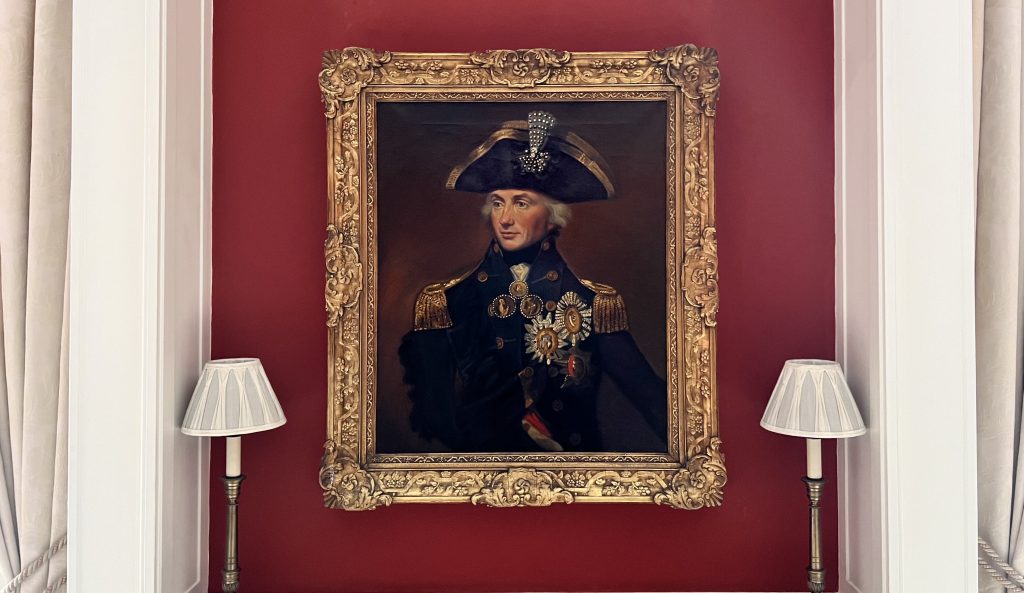
Lemuel Francis Abbott’s Horatio Nelson (1758–1805) on display in the Residence.
The 18th and 19th centuries were dominated by rivalries between Empires as well as moments of cooperation and allyship. The works in this section illustrate both instances, featuring historic battle scenes and portraits of important leading military British and Turkish figures during the Ottoman, Napoleonic and Crimean Wars.
The sparkling turban decoration pinned to Admiral Nelson’s hat, known as çelenk in Turkish, was the highest military decoration, given to him by Sultan Selim III as a gesture of gratitude for his victory over the French at the 1798 Battle of the Nile, its thirteen petals representing the thirteen French ships destroyed or captured in the battle.
Environment
This selection encourages viewers to reflect on an epoch of unprecedented global change – an area both the UK and Turkey are committed to cooperate on and influence. Capturing disrupted geographies, border landscapes, fraught histories and climate change, their symbolism gives us both dark warnings and silver linings. Frozen icy surfaces, a black sun, mutable clouds, rich autumnal colours of trees and shrubs, as well as an allegorical depiction of Mother Earth create contrasts between light and dark and evoke the beauty of nature and its inherent fragility.

Willie Doherty’s Ghost Walk III and Tacita Dean’s Foreign Policy in Ankara.
Orientalism Revisited
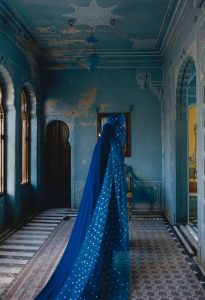
Güler Ates,Eternal Maharana and She II, 2013 © Güler Ates
These works encourage viewers to reconsider ways in which we view 19th century Orientalist interiors and challenge us to reinterpret the traditional tropes of representing these through a modern and contemporary angle.
Guler Ates’ photograph, for instance, addresses themes such as postcolonialism, female identity, diaspora and cross-cultural displacement, while Mohammed Sami’s interior encourages a broader reflection on the trauma caused by ‘displacement, not fitting and detachment from the perspective of a post-refugee artist’.
Women defying convention
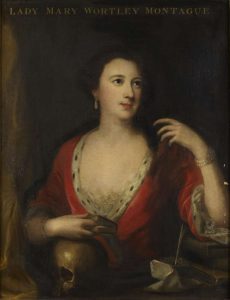
Carlo Francesco Rusca (1696 – 1769),Lady Mary Wortley Montagu (1689-1762), 1739
A scholar and an antiquarian, Lady Mary Wortley Montagu was the wife of British Ambassador to the Ottoman Empire, Edward Montagu. She was a woman who defied convention: the first western woman to write about the Ottomans. She also introduced smallpox inoculation to western medicine after witnessing it in Adrianople (now Edirne), and was the first foreign woman to interact with Ottoman aristocratic women within their sexually segregated milieu. Her detailed observations touch on social history, cultural constraints, aesthetics, entertainment of women and medical history.
Exploring aspects of private and public identity, Gillian Wearing places herself as the subject of her video work Dancing in Peckham. It shows the artist dancing in the middle of a south-London shopping centre in Peckham, one of the biggest communities of Turkish nationals in London.
Go behind the scenes
Want to learn more about this display? Go behind-the-scenes with this exclusive interview for the Lausanne Project, to find out what the challenges were when identifying which of the 14,700 artworks from the Government Art Collection would best provide a commentary on Anglo-Turkish relations past and present. Listen now.
